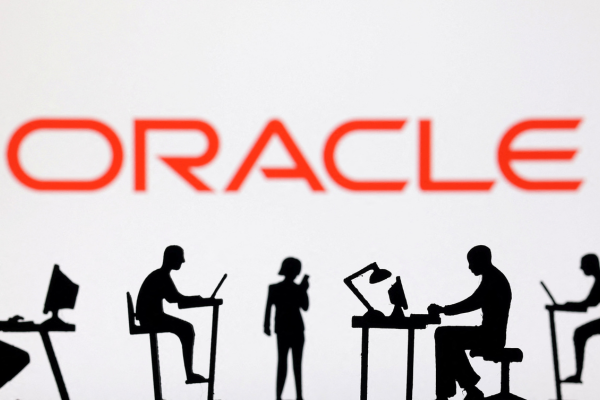Navigating your next-generation SAP relationship: an integrated sourcing strategy is essential
A successful RISE or S/4HANA transformation requires IT leaders to rethink their supplier relationships with a holistic, multi-vendor sourcing strategy.

For SAP customers, the inevitable move to S/4HANA or RISE represents more than just a technological upgrade – it is a fundamental shift in how businesses structure their entire IT supplier ecosystems. The upcoming 2027 deadline for the ECC to S/4 migration presents CIOs and IT leaders with a unique opportunity to redefine their supplier relationships and adopt a more integrated, holistic sourcing strategy that aligns with future business goals.
Transformation leaders face pressure to rethink and restructure not just their SAP relationship, but also their relationships with their cloud, implementation and managed services providers. To ensure success, UpperEdge, an IT sourcing advisory firm, stresses the importance of a holistic, multi-phase sourcing strategy that aligns every aspect of an organisation’s tech stack – enabling good decision-making while mitigating risk.
The phases of transformation: starting with phase zero
A fully integrated sourcing strategy involves three critical phases: phase zero (strategy), sourcing, and implementation. Each phase presents unique challenges and dozens of decisions that impact the overall success of the project. Planning, early vendor engagement and alignment with executive leadership are key during phase zero. Without clearly defining business objectives and a roadmap for the entire ecosystem, organisations face risks such as vendor lock-in and missed opportunities to leverage cloud services or multi-vendor capabilities. Conducting a comprehensive phase zero is an essential step that lays the foundation for everything that follows.
Len Riley, SAP Advisory Practice Lead at UpperEdge, warns, “Organisations that fail to develop a comprehensive strategy with realistic expectations early on often find themselves scrambling to adjust as challenges arise. Many proceed without adequately addressing phase zero, and as they enter the sourcing phase, they realise their initial assumptions were misguided, requiring a reset of expectations. To avoid this, it’s crucial to invest the necessary time and diligence in the early phases, ensuring predictability and avoiding costly adjustments later.”
Each decision in phase zero ripples through the sourcing and implementation phases. Considering the whole ecosystem is critical in this phase to foresee and mitigate potential risks in every aspect of your transformation. Key questions such as how do we socialise this strategy with the board, or what is the impact of this transformation on existing supplier relationships, must be answered to avoid costly missteps.
Sourcing strategy for the long term
In the sourcing phase, decisions around cloud providers, implementation partners and managed services must align with the overarching IT and business strategy. SAP’s strong push for RISE adoption complicates the decision-making process, as enterprises must evaluate both the benefits and potential limitations of RISE in relation to other parts of their tech stack. Riley notes, “RISE with SAP may seem like a simple solution, but companies need to dig deeper into the implications for their AI strategy, cloud integrations and overall infrastructure.”
It is vital that organisations do not pigeonhole themselves into relying solely on SAP for sizing and scope requirements without getting input from the hyperscalers or systems integrators. Developing your bill of materials (BOM) should be a collaborative effort across all your potential transformation providers to ensure alignment from the start.
Additionally, understanding the competitive nature of the market, particularly when evaluating cloud providers, can open your organisation up to additional cost efficiencies. The cloud providers behave very differently in a sole source compared with an RFP environment, and organisations often aren’t aware of the credits and incentives they could obtain if they play their cards right.
Selecting the right partners early on, through a structured RFP or sole-sourcing process, is crucial to avoid eroded leverage, fragmented service delivery and unforeseen costs. By understanding SAP’s tactics and aligning all vendor agreements – including cloud services, implementation and managed services – businesses can maintain flexibility throughout the transformation.
Challenges in implementation and beyond
The Implementation phase introduces its own challenges, particularly as organisations navigate multi-vendor environments and manage risk across third-party apps, application management services (AMS) and cloud providers. UpperEdge’s experience highlights how many companies fail to prepare for the operational complexity of working with multiple service providers.
For example, gaps in responsibility between an AMS provider and SAP can lead to service disruptions, while unmanaged relationships with systems integrators can result in delays or cost overruns. This underscores the need for a well-scoped statement of work (SOW) and ensuring a mutually aligned set of expectations in the sourcing phase.
Holistic strategy: the key to success
At every phase, organisations must remember that S/4HANA and RISE are not isolated IT projects. They also must remember that RISE and perpetual models are fundamentally different, and their evaluation requires a great deal of diligence to be successful.
S/4HANA and RISE represent a broader shift in how companies interact with SAP and other technology providers. Implementing an integrated sourcing strategy from the outset enables businesses to manage complexity, maintain leverage and drive optimal outcomes across the entire IT ecosystem.
“Companies that take a comprehensive view of their tech stack – beyond just SAP – are far better positioned to succeed,” says Riley. “RISE is not about SAP alone; it’s about redefining how your entire business operates with technology. This makes it critical to take a parallel path when evaluating S/4HANA or RISE and evaluating your SI, hyperscaler and managed services vendors to accurately define your program scope and capabilities.”
Building your future with SAP: take control of the journey
In today’s rapidly evolving digital landscape, no organisation can afford to treat their move to S/4HANA or RISE as a simple software upgrade. The transformation journey is a multi-phase process that requires careful planning, a strategic approach to sourcing and a comprehensive understanding of the broader implications on all vendor relationships, cloud services and implementation strategies.
Ready to ensure your SAP transformation is set for success? Learn how UpperEdge’s Integrated Sourcing Strategy can help you derisk your journey and maximise value. Visit UpperEdge to learn more.

Business Reporter Team
Most Viewed
Winston House, 3rd Floor, Units 306-309, 2-4 Dollis Park, London, N3 1HF
23-29 Hendon Lane, London, N3 1RT
020 8349 4363
© 2025, Lyonsdown Limited. Business Reporter® is a registered trademark of Lyonsdown Ltd. VAT registration number: 830519543





